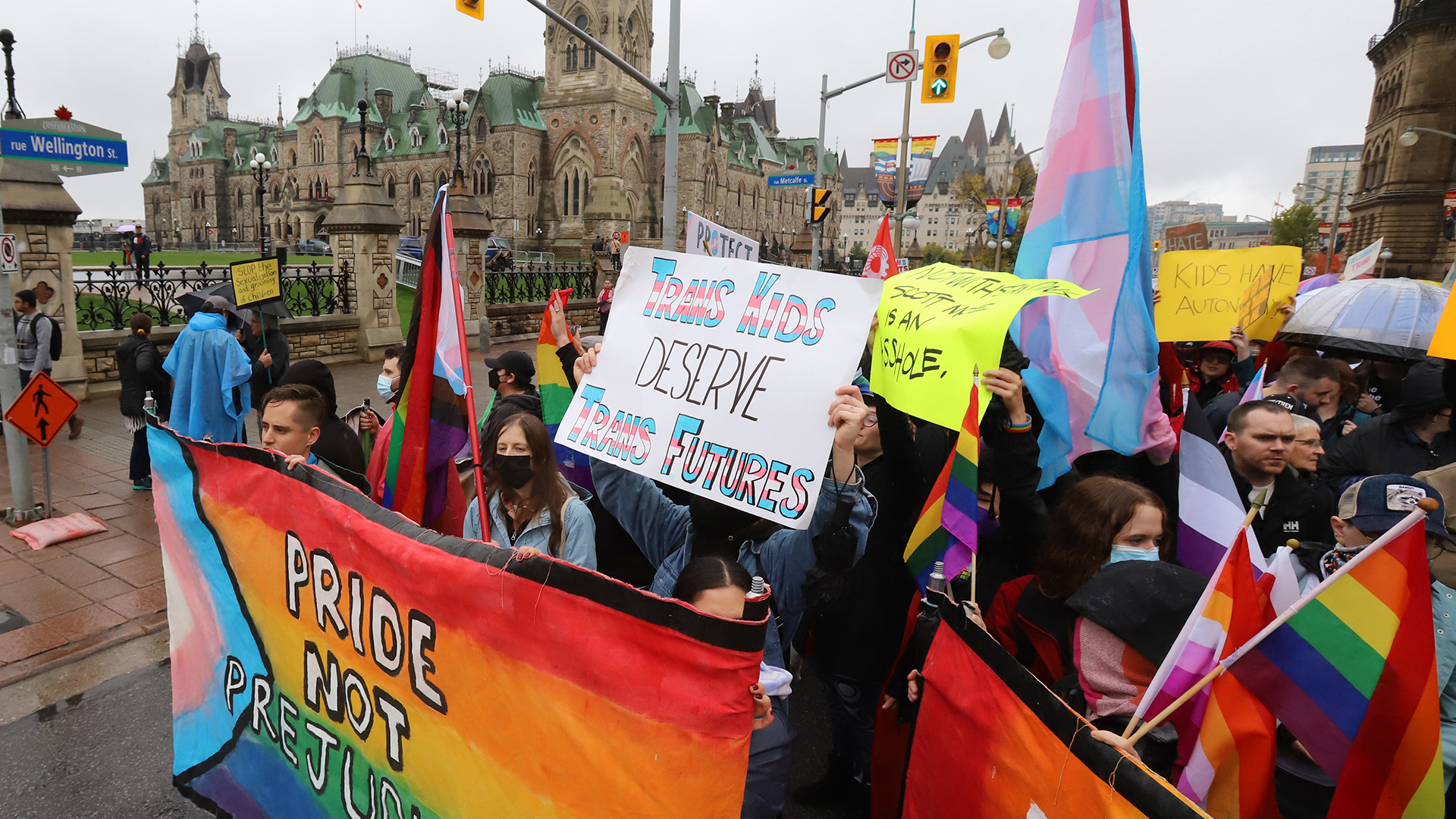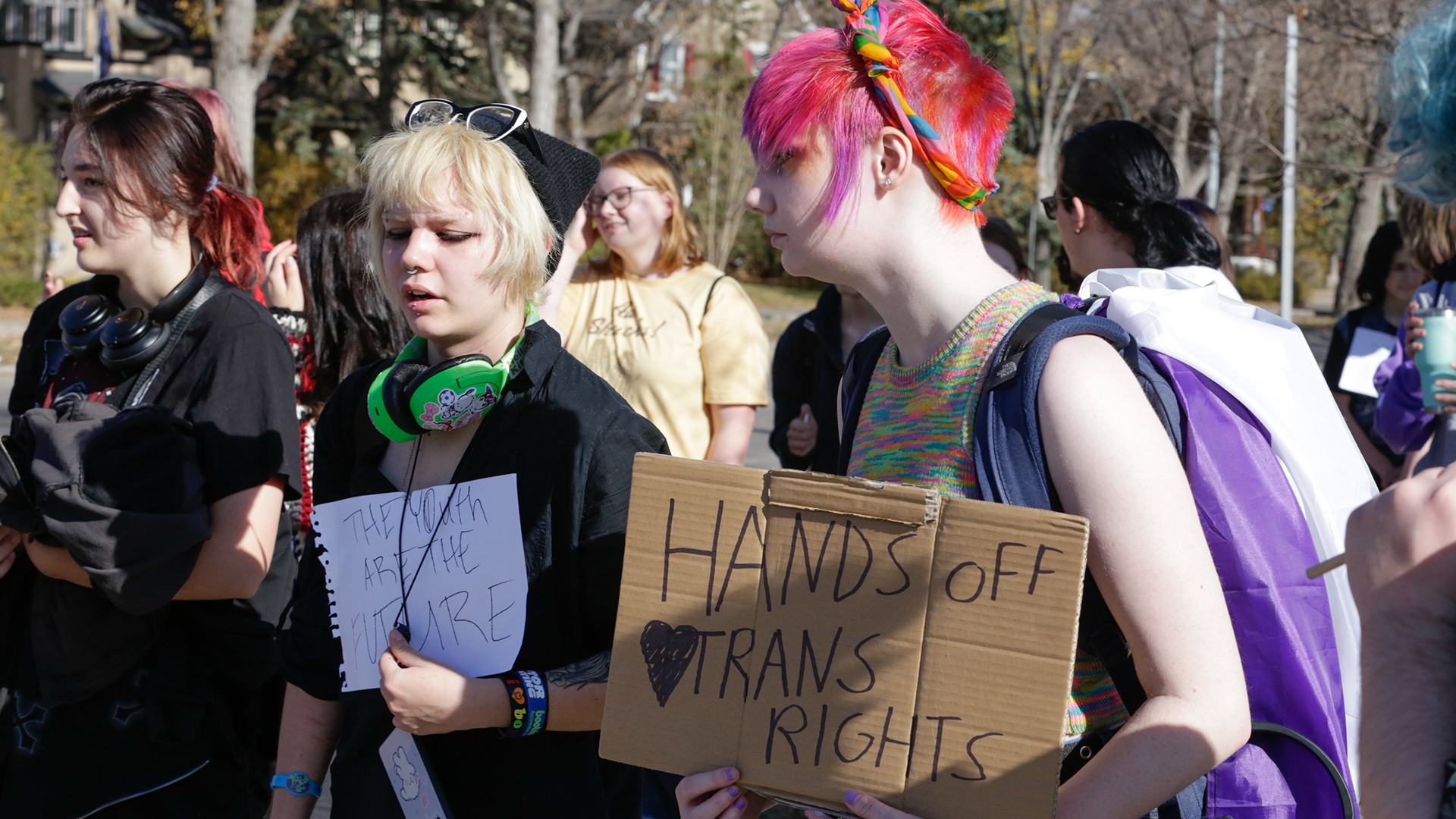
It is surely only in Canada, besotted as we are by all things constitutional, that something called the ”œnotwithstanding clause” could find a place in the lex- icon of public debate. But it is also only in Canada that a piece of constitutional furniture known as ”œthe Charter” (a.k.a. the Canadian Charter of Rights and Freedoms) could become a popular icon, deserving of an annual day of cele- bration and a virtual blow-out on its 25th birthday.
These two peculiar facts about Canada are closely relat- ed. The fact that the Charter has become an object of wor- ship ”” a symbol of everything right and good ”” has thrown the notwithstanding clause (which, believe it or not, is part of the Charter) into bad political odour. For under this strange sounding clause (even stranger when dressed up in its fancy Latin garb as the non obstante clause) the parliaments of Canada can insulate a piece of legislation from Charter challenge for five whole years. God forbid that those whom we have elected should have their way with our beloved Charter! No wonder Brian Mulroney, sniffing the populist breeze, once declared that so long as it con- tained the notwithstanding clause, the Charter of Rights ”œwas not worth the paper it is written on.”
Well, I am here to tell you that Mulroney and his fellow Charter worshippers are wrong, and to plead the case not only for retaining the notwithstanding clause but for occa- sionally having the guts and brains to use it. In doing so, I know that I face an uphill battle, having just witnessed another Conservative prime minister, Stephen Harper, refus- ing to use the notwithstanding clause even though it was needed to give effect to his legislative objective of restoring the heterosexual marriage monopoly in Canada.
My point is not to defend so-called ”œtraditional mar- riage” but to defend the legitimacy of Parliament debating and deciding how marriage should be defined in Canadian law. I believe that it is wrong to deny the equal benefit of our laws to Canadians because they are gay or lesbian. Like the many Canadian judges who have examined the matter, I can see no justification in a free and democratic society for lim- iting the rights of gays and lesbians to enjoy the same bene- fits that heterosexual Canadians derive from the state’s recognizing of their marriages. And I was pleased to find that a majority of our elected representatives in the House of Commons were willing to support legislation changing the traditional definition of marriage. But I would have been a lot happier if our parliamentarians had been as clear as our courts have been about the reasons for doing so, instead of simply repeating Prime Minister Martin’s mantra that it was simply a matter of Charter rights. And I would have a lot more respect for Prime Minister Harper if he had the guts and ”” dare I say it? ”” the brains to be willing to use the notwith- standing clause to re-test the will of Parliament in a meaningful way.
To defend the notwithstanding clause is not to oppose the Charter. After all, it is part of the Charter. It was includ- ed in the Charter for a very good reason: a belief that there should be a parliamen- tary check on a fallible judiciary’s deci- sions on the metes and bounds of our fundamental rights and freedoms. It was in the great tradition of the Canadian capacity for compromise on things fun- damental. It was a compromise between the tradition of parliamentary supremacy and the prospect of judicial supremacy. And, in 1981, it was indeed a ”œdeal- maker.” Without it, Pierre Trudeau would not have had the support of nine pre- miers for his patriation package, and we would not have had the Charter in 1982.
Premiers like Saskatchewan’s Allan Blakeney, Alberta’s Peter Lougheed and Manitoba’s Sterling Lyon, who insisted on inclusion of the notwithstanding clause in the Charter, were no less civil libertarians than Trudeau. But they had a stronger respect than Trudeau ever evinced for the importance of parlia- mentary democracy to this country’s freedom. As civil libertarians they wel- comed the opportunity the Charter gives citizens to go to court and ask judges to test the laws and practices of government against the rights and free- doms in the Charter. They accepted that Canada’s judiciary would be at the front line of decision-making in giving meaning to the abstract ideals of the Charter and applying them, with authority, to the realities of democratic governance. While most of the time the country would live with the decisions of judges on the requirements of the Charter, a clause was needed for those exceptional occasions when elected leg- islators, federal, provincial or territorial, after careful deliberation, conclude that the way judges have construed, or are likely to construe, a Charter right or freedom is an unreasonable constraint on democratic power or threatens a vital interest of society.
I will admit that the story of the notwithstanding clause’s use and non-use through the Charter’s first quarter-century has not been an encour- aging story for its fans. Indeed, the most famous ”” or infamous ”” use of the leg- islative override seems to bolster the case of its detractors. I refer to Robert Bourassa’s decision in December 1988, in the heat of the constitutional battle over the Meech Lake Accord, to invoke the notwithstanding clause to restore Quebec’s French-only sign law, which had been struck down by the Supreme Court of Canada. The decision was made not through reasoned legislative legislative debate but by Bourassa’s cabi- net and caucus listening to mobs in the streets howling against any federal institution that dared to touch Quebec’s lan- guage law. The decision turned out to be a decisive nail in the coffin of the Meech Lake Accord, and while that may be the one good thing Trudeauites can say about the notwithstanding clause, it is not exactly an advertisement for it.
Let me add to the detractors’ case by citing another quieter but nonetheless abusive use of the clause by a Quebec government. This was the blanket use of the notwithstanding clause by the PQ government to immu- nize all new Quebec legislation from Charter review. The Supreme Court of Canada upheld this blanket use of the legislative override in the same deci- sion in which it struck down Quebec’s sign law. But it was wrong to do so. The judges clearly had no appreciation of the notwithstanding clause’s role in maintaining parliamentary democracy. But these abusive uses of the Charter’s legislative override do not justi- fy getting rid of it or not using the clause in an appropriate manner. After all, judges too can use the Charter abusively. Not so long ago, an Ontario Superior Court judge, Paul Cosgrove, was raked over the coals by Ontario’s Court of Appeal for making 150 Charter rulings in a murder trial that were ”œwithout foundation.” That finding may eventu- ally lead to Justice Cosgrove’s removal from the bench. But it will not and should not lead to terminating the use of the Charter by trial judges. Judges, like legislatures, are fallible.
I would add that in the long term the dubious use of the legislative override by Quebec governments has not done much harm, and might even have done some good. Eventually, when nationalist tempers cooled down and a United Nations tribunal agreed that Quebec’s prohibition of outdoor English signs was excessive, the province adopted the very compromise the Supreme Court had rec- ommended ”” that French be the pre- dominant although not exclusive language of outdoor advertising in Quebec. And subsequent Quebec govern- ments, PQ and Liberal, have not returned to blanket use of the override. The Charter is alive and well and popular in Quebec. It might even be argued that the availability of the override helped to dampen down nationalist feelings that the 1982 constitutional changes had robbed Quebec of its autonomy.
There can be no doubt that the Bourassa government’s use of the Charter’s notwithstanding clause to protect Quebec’s French-only sign law gave the clause a bad name in English Canada. But by now, nearly 20 years later, that 1988 episode is a very faded memory. We must look for deeper and more persistent factors to account for how seldom the clause has been used.
The benign reason for non-use of the notwithstanding clause is that Canadian judges have done a pretty good job in interpreting and applying the Charter. This statement, I know, will shock and offend the anti-activist critics of our judiciary. Nonetheless, on my reading of the evidence, the Supreme Court of Canada and the lower courts generally have been mod- erate, balanced and reasonable in their treatment of the Charter. Yes, there have been exceptions, and I will get to these in a minute, but on the whole the judiciary’s interpretation of the Charter has not been counter-majoritarian and has not put pressure on elected legislators to exercise their power to insulate their laws from Charter-based judicial review. Most of the judicial-phobia has come from academic and political crit- ics on the far right who oppose the expansion of social equality and reduc- tion of police powers that judicial deci- sions in Charter cases have facilitated.
But there have been a few Charter decisions of our highest court that I find very difficult to swallow and that might well justify use of the notwith- standing clause. In my view the top candidate is the Supreme Court’s deci- sion in the judicial remuneration case.
Here the Court’s majority found that the Charter right of a person charged with a criminal offence to be tried by ”œan independent and impartial tribunal,” bolstered by a reference in the original Constitution’s preamble to Canada having ”œa Constitution similar in principle to that of the United Kingdom,” requires that in setting the pay levels of Canadian judges legislatures must act on recommenda- tions from independent commissions. If a legislature decides to pay less than a compensation commission recom- mends, the reasonableness of its doing so can be reviewed and over-turned in the courts. In other words, according to this very far-fetched reading of our constitution, the judges have the final word in deciding how much they should be paid. The six Supreme Court justices who went along with this decision seemed not a bit disturbed by the conflict of interest inherent in their ruling. I believe that most Canadians, if they knew about this decision, would be dis- turbed by the judges’ conflict of inter- est, and would support the use of the override if it is needed to protect the recent decision of Canada’s parliament not to accede fully to the increases in judicial salaries recommended by the federal compensation commission.
Another deserving target of the Charter override was the Supreme Court’s 1995 decision in RJR-MacDonald Inc. striking down (by a bare 5-4 major- ity) federal legislation prohibiting tobacco advertising and requiring health warnings on tobacco product packaging. The majority found the law to be an unreasonable limit on tobacco manufacturers’ freedom of expression. Parliamentarians may well have found that the Supreme Court’s decision was an unreasonable expansion of freedom of expression at the expense of Canadians’ health. Instead, they fol- lowed the Supreme Court’s hint on how an amended law might meet with its approval, and rewrote it, focusing its advertising ban on lifestyle ads.
Another close call where a Supreme Court decision in the health field might have merited invoking the notwith- standing clause was its 2005 decision in Chaoulli upholding a challenge to Quebec’s ban on private insurance for services covered by Canada’s public health plan. However, the majority judg- ment in this case was based on the soft and easily overridden provisions of Quebec’s Charter of Human Rights. But if in subsequent cases, a majority on the Court endorses the broad substantive interpretation of fundamental justice in section 7 of the Charter advanced by Chief Justice McLachlin in Chaoulli as the basis for requiring a major expansion of private medicine in Canada, I hope that a majority of our elected representa- tives will have the guts and the brains to debate the issue and use the override if they conclude that the Supreme Court of Canada’s national health policy is not good for the country.
But will they? Writing about the notwithstanding clause some years ago, Howard Leeson commented ”” with regret ”” that the notwithstanding clause appeared to be a ”œpaper tiger” that, like the powers of reservation and disallowance, was ”œavailable in theory, but not used in practice.” It is to be hoped that nothing as strong as the convention that governs non-use of reservation and disallowance will devel- op around section 33 of the Charter. The reason that federal governments should not use reservation or disallowance is respect for our federal system of govern- ment. The reason that our political lead- ers should not follow Paul Martin, who blurted out in an election debate that he would never use the notwithstanding clause, is respect for our parliamentary system of government.
I believe that maintaining a sensi- ble attitude to use of the Charter’s notwithstanding clause is more a mat- ter of having brains than of having guts. Politicians’ fear that the electorate will punish any government that uses the notwithstanding clause is not based on any solid empirical evidence about public opinion. When three col- leagues and I did some in-depth interviewing of elected politicians and citi- zens 20 years ago, we found that sup- port for legislatures being able to override courts on Charter issues was ”” interestingly ”” greater among elected politicians than among citizens. However, when we moved from the general to the particular and asked about applying the override in specific situations, we found shifting partisan differences in support for using the leg- islative override. For instance, when we asked about using it to maintain a law controlling unions, support for the leg- islature having the last word rose among Conservatives but fell among Liberal, NDP and PQ politicians, and vice versa when the law struck down by the courts was one that aimed at assist- ing the poor. Even though public regard for the Charter as icon has prob- ably strengthened since we did our research, I very much doubt that there is a settled majority opinion against using the legislative override. The poli- tics of any given use will depend on the policy concerns at issue.
But the real intelligence that is needed is the constitutional wisdom that led to including the notwith- standing clause in the Charter ”” suffi- cient respect for parliamentary democracy not to let the judiciary always have the last word on rights and freedoms. Let us hope that the next generation of political leaders in Canada will eschew the simplistic thinking of Mulroney and Martin and follow the wise statecraft of Blakeney, Lougheed and Lyon.







